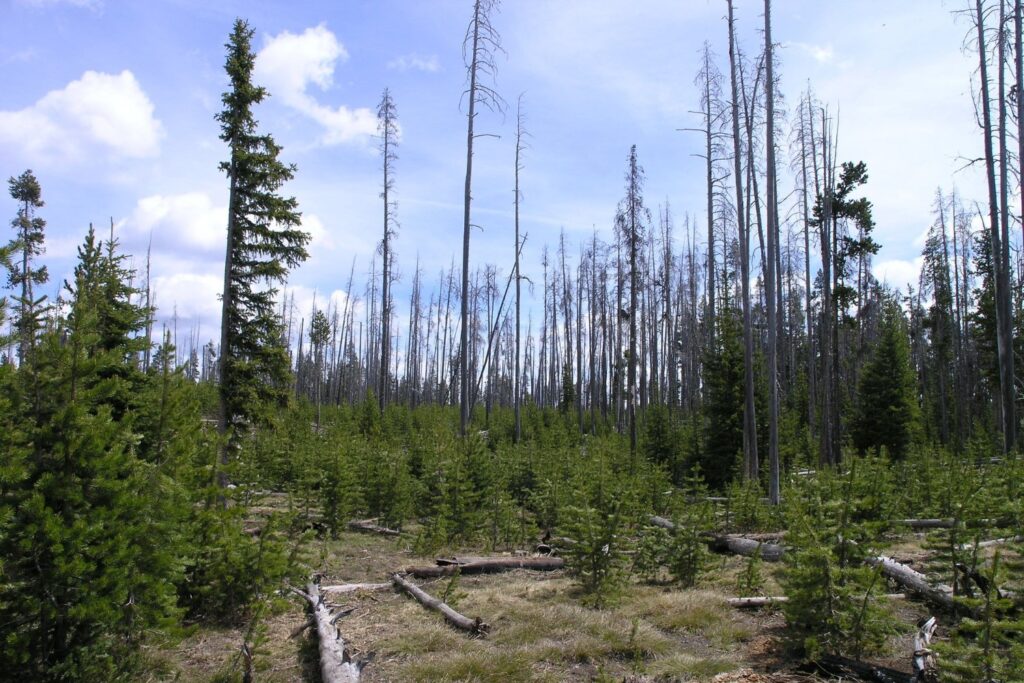One thousand National Park Service staff in their probationary period were abruptly dismissed last week as the Trump administration moves forward with what officials say are cost-cutting measures across the federal government.
A National Parks Conservation Association release called for an immediate halt to the staffing cuts, citing their devastating impact on park visitors’ experience and the obvious impacts they will have on the affected staff. The sweeping cuts and a hiring freeze are part of a broader effort by the Trump administration to slash the federal workforce working in the sciences and conservation.
The Department of the Interior is exempting 5,000 seasonal jobs from the hiring freeze, while terminating 1,000 permanent National Park Service staff roles.
According to an NPCA spokesperson: “In at least some cases, they [NPS staff] received emails, not from their managers, saying it was for poor performance, despite track records to the contrary.” In the wake of the abrupt cuts, affected park rangers and other staff shared stories about their connection to the parks and the indiscriminate nature of the staffing changes. NPCA posted its own set of employee testimonials yesterday.
Probationary periods are generally yearlong or two-year periods during which park workers’ positions are put under review. The staff are typically those who are performing well and have “glowing performance reviews,” but have not been in their positions long, John Garder, the NPCA’s senior director on budget and appropriations director, told Gizmodo in a phone call.
In other words, the probationary period is not specifically weeding out underperformers. Garder said the staffing cuts, alongside the seasonal worker exemption, have put the National Park Service in a very unstable situation right before some of the parks’ busiest time of the year.
“There are major questions about whether they’ll get enough applicants, and if they’ll have the HR capacity to onboard an onslaught of people in such a short amount of time,” Garder said. “That raises concerns in particular right now about whether or not the parks that are highly visited in the spring will have the people they need to provide a safe and enjoyable visiting experience.”
Garder said that some of the national parks that will especially feel the pain of the staffing cuts are Great Smoky Mountains, Zion, Acadia, Joshua Tree, Gateway and Golden Gate National Recreation Areas, among others.
Among the affected NPS staff: The sole locksmith at Yosemite National Park and members of Gettysburg National Military Park’s bookings team, leaving visitors who reserved on-site farmhouses stranded with canceled reservations. One park lost multiple fee staff (among others) just before the busy season; another lost 75% of its interpretive staff, and another lost 20% of its total permanent staff, an NPCA spokesperson told Gizmodo. Affected roles include administrative, maintenance, cultural resources staff, and fee collectors.
“There continues to be mass confusion at the management and staff level, with career people largely out of the loop and not consulted during a process that is coming from the Office of Personnel Management,” the NPCA spokesperson said via email. “So far, this appears to be an undertaking as reckless and thoughtless.”
The changeups to the federal workforce working in the sciences—from forest conservation to disease control—are occurring at a head-spinning pace, as some of the administration’s Cabinet positions remain open. These NPS cuts come from the same administration whose president has historically derided forest mismanagement as a reason for devastating forest fires. By that logic, laying off parks staff—stripping the sites of staff members dedicated to keeping the parks smoothly operating—may be a foolish decision. Let’s hope that the staffing cuts did not affect the forest rakers.
NPCA put out a petition demanding a reversal of the staffing decisions and asked members of the public to sign it. “We’re urging park lovers across the country to reach out with deep concern about this situation to their elected officials in Washington,” Garder said. “It’s critical that members of Congress hear from the American people, who they represent, that this is an unacceptable situation and our national parks cannot afford to lose staff.”
The National Park Service cuts are part of widespread hiring freezes and layoffs at federally funded science institutions, directed by the Trump Administration. Bloomberg reported this week that the Commerce Department is preparing to fire up to 500 staffers at the National Institute of Standards and Technology, a lab that conducts fundamental research on everything from quantum encryption to genetic material for testing for bird flu to extraordinarily precise nuclear clocks.
According to NASA Watch, probationary firings at NASA are on pause but something (read: staffing changes) may happen either today or on Monday. The journal Science‘s news arm reported that the National Institutes of Health laid off up to 1,200 employees, the Centers for Disease Control terminated 750 roles, and the National Science Foundation sent 168 employees packing—about 10% of the foundation’s workforce. Axios reported that NOAA and NASA are bracing for similar reductions in staff.
More than 300 million people visit the United States’ National Parks each year, contributing more than $55 billion to the U.S. economy in 2023. It’s not clear how the staffing changes will affect parks visitors—it will be impossible to know until the busy season begins—but those closest to the situation say the outlook is not good.







